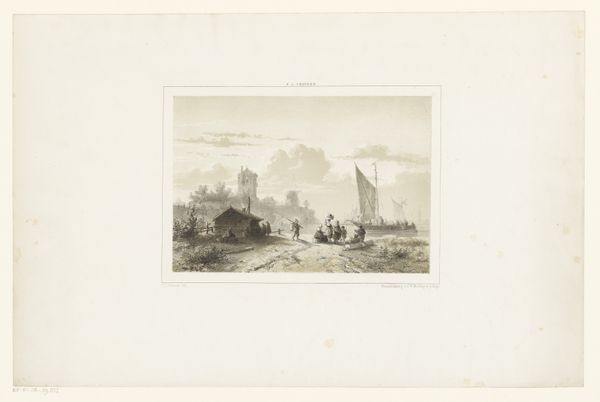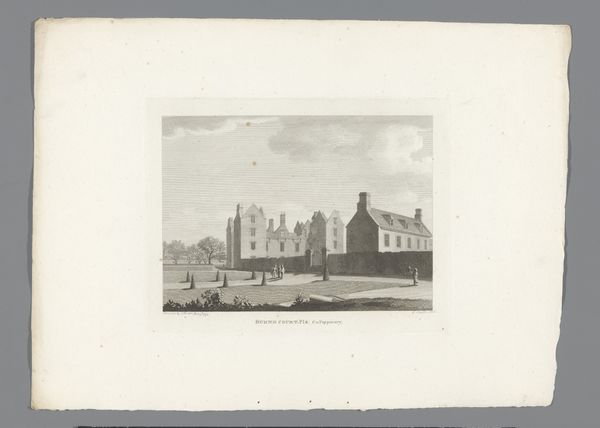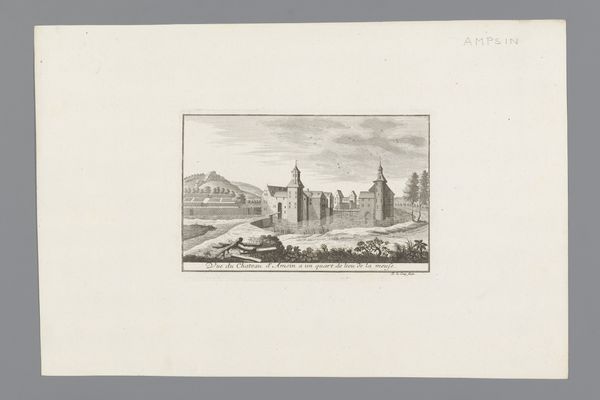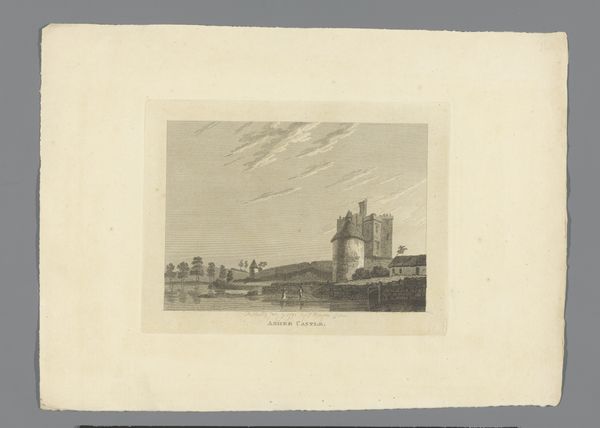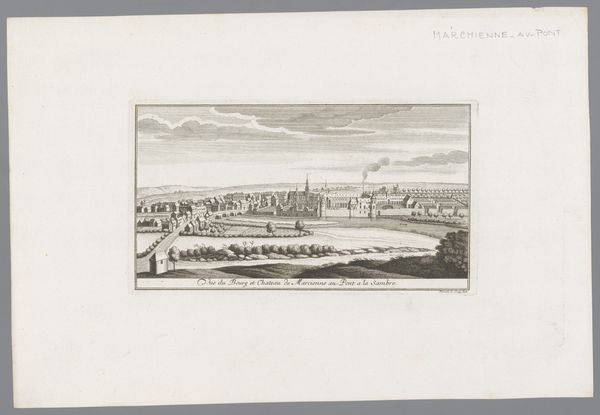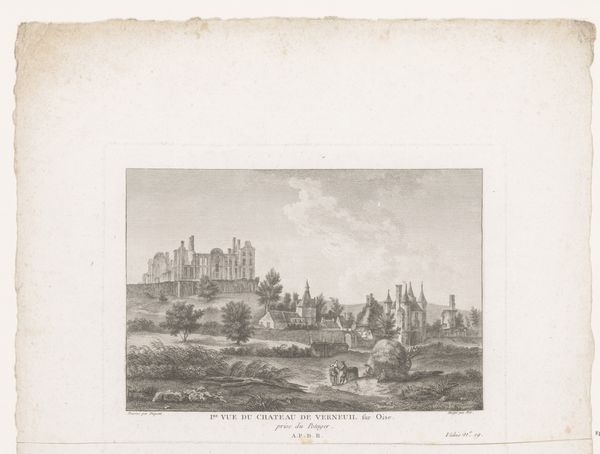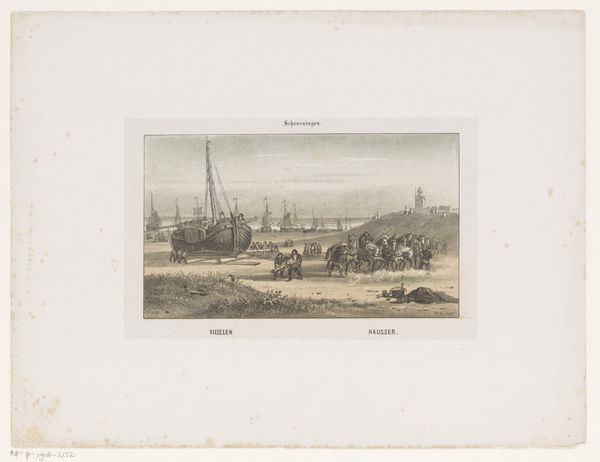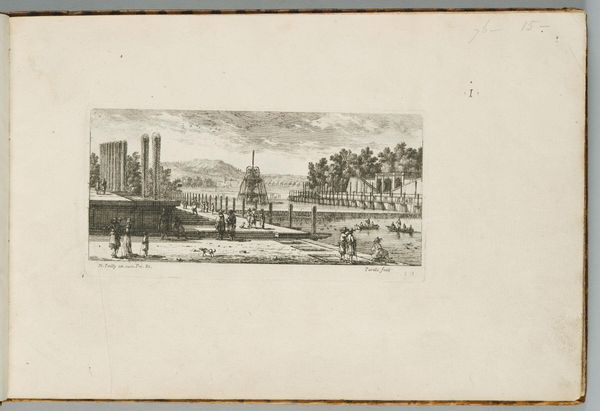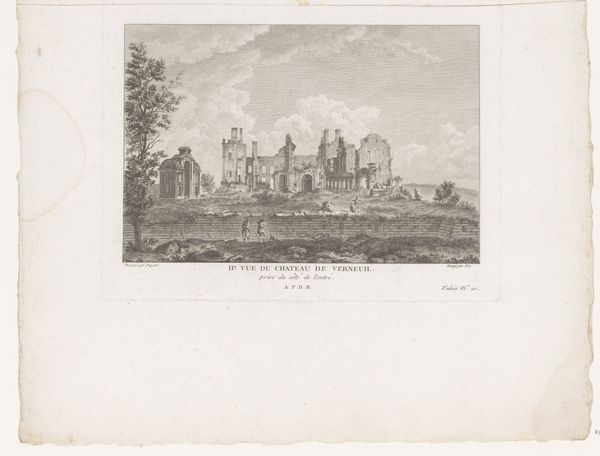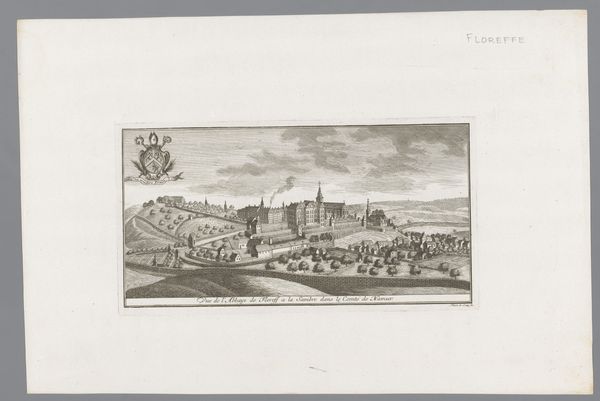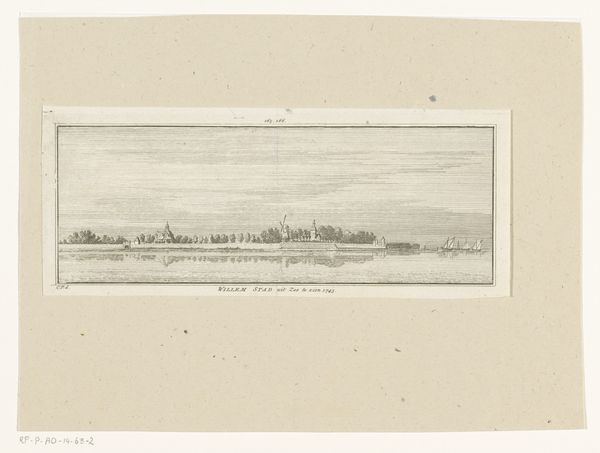
drawing, print, etching, paper, engraving
#
drawing
# print
#
etching
#
landscape
#
paper
#
romanticism
#
line
#
history-painting
#
engraving
Dimensions: height 154 mm, width 200 mm
Copyright: Rijks Museum: Open Domain
Editor: Here we have James Newton’s print, "View of the Ruins of Burncourt Castle," likely made between 1792 and 1796, using etching and engraving on paper. There's a melancholic feel, seeing this decaying structure amidst an otherwise pastoral scene. What strikes you about it? Curator: The print certainly evokes a sense of loss, doesn't it? Consider the socio-political context of its creation. The late 18th century witnessed significant shifts in power dynamics, particularly within colonial structures. This image isn’t merely a picturesque scene. It’s a representation of the crumbling remnants of power. Do you notice the seemingly serene landscape almost overshadowing the ruin? Editor: Yes, now that you mention it, the sheep grazing and people near the river seem indifferent to the castle's state. Curator: Exactly. What does that indifference suggest? Perhaps a commentary on the fleeting nature of power or a critique of the social structures that allowed such decay to occur, both physically and metaphorically. Think about the legacy of colonialism and how the dismantling of power can leave behind physical and social ruins. How does this artwork speak to that ongoing dialogue? Editor: I hadn’t considered it that way, but the focus on the everyday against the backdrop of collapsed authority certainly makes me think of systemic inequality. It makes the image much more complex. Curator: It's through such lenses that we can understand the nuanced relationship between art and the world it reflects, challenges, and seeks to change. Editor: I see this print in a completely different light now, it’s so much more than just a pretty picture of old ruins. Thank you! Curator: And thank you. It is in reflecting on these connections that we truly grasp the artwork's message.
Comments
No comments
Be the first to comment and join the conversation on the ultimate creative platform.
